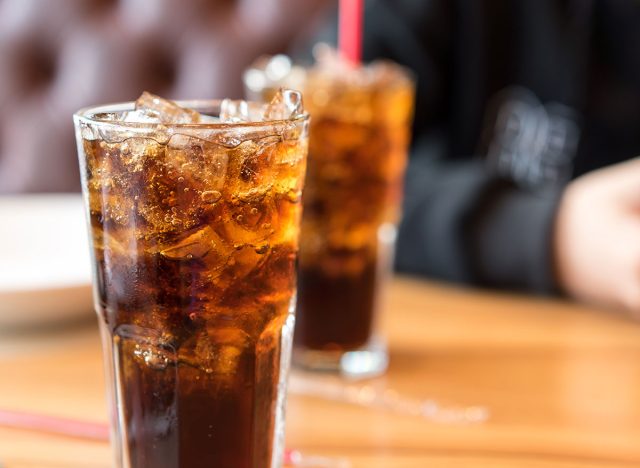Pinch your belly with your thumb and index finger. Feel that soft, jiggly stuff? It's subcutaneous fat.
Now, forget about it.
We want you to pay attention to the fat that you can't feel. Called visceral or intra-abdominal fat, this deep fat is found around organs like your liver and intestines. This is considered the most dangerous fat because it's active. Visceral fat actively secretes hormones and unhealthy biochemicals that can impact the production of cholesterol and cause cells to become resistant to insulin, according to Harvard Medical School researchers. Studies have linked visceral fat to increased risk of cardiovascular disease, type 2 diabetes, dementia, and in women, breast cancer.
Science has determined the ways visceral fat accumulates, so we know exactly how to avoid it. The number one way to avoid surrounding your internal organs in this bioactive fat? Put down that can of soda. While you're at it pour the sweet tea down the drain. Get rid of fruit cocktails, energy drinks, too. Avoid anything made with added sugars, especially high fructose corn syrup. Make SSBs (sugar-sweetened beverages) your nemeses. High consumption of soda and its sugary cousins has been linked to obesity and a host of metabolic diseases all because these drinks cause this deadly visceral fat.
Related: Surprising Side Effects of Not Drinking Soda, Say Dietitians.
The link between visceral fat and sugar-sweetened beverage consumption.

The scientific name for this dangerous fat is "visceral adipose tissue," or VAT. You can't tell how much you have just by looking at your body. Doctors can only determine how much is surrounding your organs using a CT (computerized tomography) scan, which is a series of X-rays that the computer turns into cross-sectional images of the soft tissues inside you.
In an observational study published in the journal Circulation in 2016, researchers analyzed abdominal CT scans from middle-aged participants in the famed Framingham Heart Study and compared the results to the participants' self-reported dietary questionnaires. The researchers observed that the people who reported drinking one or more servings of sugar-sweetened beverages daily had a 29% greater increase in VAT volume over a six-year period compared with study participants who drank no SSBs.
How much sugar you should limit yourself to per day (and you should try to consume even less, if possible).
Scientific research like this study and surveys estimating how much sugar Americans consume daily has prompted the American Heart Association (AHA) to issue guidelines on consumption of added sugars. AHA experts advise that women consume no more than six teaspoons of sugar (or 100 calories of added sugar) daily while men limit sugar consumption to nine teaspoons or 150 calories a day.
The AHA estimates that, on average, Americans consume 22 grams of added sugars daily, mostly from processed foods and beverages. That can add up to a lot of dangerous belly fat—and weight gain. If you drank just one 12-ounce sugar-sweetened soft drink every day, and didn't reduce calories elsewhere in your diet, you could gain up to 15 pounds in three years, according to a study in the Journal of the American College of Cardiology.
Psst! Here's another reason to avoid these VAT makers: SSBs Can Cause You to Overeat!
For more healthy eating news, make sure to sign up for our newsletter!
Read these next:
"drink" - Google News
December 24, 2021 at 08:03PM
https://ift.tt/3mvtiaU
The #1 Drink to Avoid Visceral Fat, Says Science — Eat This Not That - Eat This, Not That
"drink" - Google News
https://ift.tt/2STbaKe
https://ift.tt/2VWmZ3q
Bagikan Berita Ini














0 Response to "The #1 Drink to Avoid Visceral Fat, Says Science — Eat This Not That - Eat This, Not That"
Post a Comment